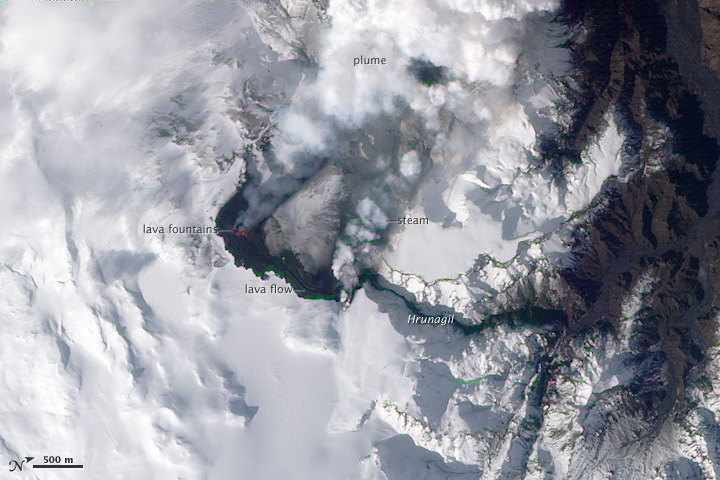

| Visitors Now: | |
| Total Visits: | |
| Total Stories: |

| Story Views | |
| Now: | |
| Last Hour: | |
| Last 24 Hours: | |
| Total: | |
New Research Improves Estimates Of Amount Of Ash In Volcanic Cloud
The amount of ash released by Iceland’s Eyjafjallajökull volcano during April 2010 was significantly underestimated at the time of the eruption, according to a new model developed at the University of Bristol and published in the Journal of Geophysical Research. This could have important consequences for airspace management during future eruptions.
Explosive volcanic eruptions, such as that of Eyjafjallajökull in 2010 and Grimsvötn in 2011, inject huge quantities of ash high into the atmosphere that can be spread over large distances. Airspace management during eruptions relies on accurate forecasting of the spreading of ash. A crucial requirement is an estimate of the rate at which material is delivered from the volcano to the atmosphere, known as the source mass flux.

Previously, the source mass flux has been estimated directly from the height of the ash plume. This new study, led by Dr Mark Woodhouse, a mathematician at the University of Bristol’s Cabot Institute, demonstrates that wind conditions at the time of the eruption have a significant impact upon the height of the ash plume, and that neglecting the effects of wind can lead to significant under-predictions of the rate at which ash is erupted from the volcano.
The model incorporates detailed meteorological data into calculations of the plume height. Applying it to the record of plume height observations during the Eyjafjallajökull eruption shows that the source mass flux at Eyjafjallajökull was up to 100 times higher than was estimated during the eruption. Underestimates of the source mass flux by such large amounts could lead to unreliable forecasts of the ash hazard to aviation.
Dr Woodhouse said: “This study represents an important development in our modelling of volcanic plumes and allows more accurate assessments of the source conditions to be made during volcanic eruptions. The results of our study can complement the state-of-the-art forecasting tools used to predict the spreading of ash during volcanic crises.”
The model of wind-blown volcanic plumes was developed at the University of Bristol by researchers from theSchool of Mathematics and the School of Earth Sciences working as part of a multidisciplinary national Natural Environment Research Council (NERC)-sponsored consortium ‘Characterisation of the Near-Field Eyjafjallajökull Volcanic Plume and its Long-range Influence’.
The work of the consortium aims to ensure that the UK is better prepared for future volcanic crises by examining in detail the Eyjafjallajökull eruption in 2010.
Paper
‘Interaction between volcanic plumes and wind during the 2010 Eyjafjallajökull eruption, Iceland’ by M. J. Woodhouse, A. J. Hogg, J. C. Phillips, R. S. J. Sparks in the Journal of Geophysical Research
This work has been completed as part of the University of Bristol’s Cabot Institute.
The Cabot Institute
The Cabot Institute at the University of Bristol carries out fundamental and responsive research on risks and uncertainties in a changing environment. Our interests include natural hazards, food and energy security, resilience and governance, and human impacts on the environment. Our research fuses rigorous statistical and numerical modelling with a deep understanding of interconnected social, environmental and engineered systems – past, present and future. We seek to engage wider society – listening to, exploring with, and challenging our stakeholders to develop a shared response to 21st Century challenges. Find out more about our work at www.bristol.ac.uk/cabot
Volcanology at the University of Bristol
The University of Bristol is a leading international centre for volcanology, and has been involved in many other studies on volcanic plumes, see:
£530,000 to study Icelandic volcano
2013-02-22 23:30:32
Source: http://nanopatentsandinnovations.blogspot.com/2013/02/new-research-improves-estimates-of.html
Source:


